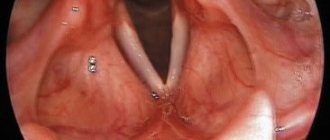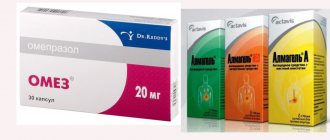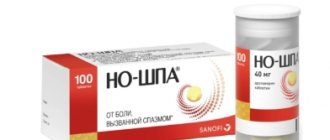Not everyone knows that acute appendicitis can lead to severe and sometimes life-threatening complications. These include intra-abdominal ulcers, pylephlebitis, peritonitis and appendicular infiltrate. The latter is most often expressed on the 2-4th day by the appearance in the right iliac region of a varying size, painful and immobile formation.
In rare cases, it may appear in other places. Local pain is determined during palpation. The Bloomberg-Shchetkin symptom may persist for several days. Leukocytosis in the blood is moderate with a shift to the left side, and the temperature rises to 37-38 degrees.
Wound infection
Wound infection is the most common complication of appendicitis.
It is the most common complication, occurring in approximately 15% of patients. In most cases, the inflammation is superficial and can be treated with antibiotics. In a small number of patients, wound dehiscence occurs with purulent discharge, and surgical intervention may be required to drain collections in the abdominal wall.
Premature discharge from the medical department often leads to the development of wound infection. It is imperative to discuss with the patient the likelihood of all possible complications before leaving home. As noted above, in most cases, wound infection can occur after laparoscopic appendectomy.
There is no precise information regarding changing the incidence of wound infection by injecting a local anesthetic into the wound, which can reduce pain after surgery in the wound area and is not particularly clinically significant. The patient's skin is sutured with continuous or interrupted sutures, which in no way affects the tactics of the patient's further behavior or the frequency of his wound infection.
If significant contamination occurs during appendix perforation, surgeons may leave the skin incision open. Although the healing of such a scar generally lasts several weeks, its subsequent cosmetic result is still completely satisfactory.
Appendicitis
When the first signs of appendicitis are noticeable, this indicates that you need to immediately visit a medical center. It is better if a person manages to visit a medical facility on his own, rather than bring his health to the point of calling an emergency room. Unfortunately, the processes occur instantly, and after 2-3 days the health condition approaches critical. That is why it is important to know how appendicitis begins and what to do in this case.
The treatment process often takes place through surgery. But there are cases when surgery is impossible or there is no great need for it. In an acute condition, other methods of influence are excluded, but with timely treatment, the doctor can suggest alternative methods.
What causes appendicitis in children and adults
As we said, this disease has no age; it occurs in both adults and children. The signs are quite obvious at any age, but children may incorrectly explain the symptoms and fail to determine the side in which the pain appears. Parents need to understand the stages of the onset of the disease. To do this, you need to know what causes the acute pathological process.
Food is primarily to blame. It’s not for nothing that parents tell their children that they can’t eat green apricots or seeds with shells. The older generation also neglects nutritious food. Because of this, metabolic processes are disrupted and organ blockage occurs.
One more reason can be identified: disruption of the gastrointestinal tract. In this case, the likelihood of developing other pathologies increases. Patients often indicate diseases associated with pathologies of the gastrointestinal tract.
Children may remain silent about abdominal injuries. It is worth examining the child regularly; if damage is suspected, you need to go to the clinic, where they can perform the necessary tests.
If appendicitis hurts, you need to start treatment immediately. Under no circumstances should you cope with the disease on your own; if there is the slightest suspicion of appendicitis, consult a doctor immediately.
Treatment of the appendix: how inflammation is eliminated
To prevent appendicitis from affecting the body, surgery is performed. The disease is treated by an experienced surgeon; the task is to remove the appendix. If the inflammatory process is acute, then the traditional method of surgery is used, in which an open incision is made. There is also a laparoscopic method that allows you to remove the appendix directly while studying the patient’s condition.
Once the appendix is removed, the person is admitted to a ward for further recovery. After the operation, the patient should be in a supine position. For 12 hours it is strictly forbidden to get up, it is forbidden to eat any food. In the future, you can start moving a little and eating foods that your doctor has approved. The recovery period takes approximately 1 week. Sometimes the patient’s health worsens, the temperature rises, then the recovery period can be extended to 2 weeks.
If surgery cannot be performed for certain reasons, the doctor prescribes conservative therapy. It includes the use of antibiotics and other pharmacological drugs. In this case, the patient is placed in a hospital.
It is recommended to undergo additional therapy to improve your health. It is necessary to monitor the development and recovery of the body after surgery, begin physical exercise, but only under the supervision of an experienced specialist. Loads should be moderate.
Is it possible to cure appendicitis with folk remedies?
When unpleasant feelings arise from appendicitis, many sick patients want to help themselves. To do this, they are beginning to use unconventional methods of influencing the body. But some don't even know where appendicitis is, let alone treatment options.
It is worth knowing that this disease cannot be treated with folk remedies. After any signs indicating pathology appear, you should immediately call a doctor or go to a medical center. As pathological processes develop, your health will deteriorate. Traditional recipes will not save you from a ruptured appendix, and if this happens, pus will enter the abdominal cavity. This can be fatal. It is difficult to understand from the signs whether the problem is with the appendix or with the gastrointestinal tract. Only a specialist can figure it out.
Other purulent complications
Complications can be diagnosed using ultrasound.
Quite often there is an accumulation of fluid near the cecum, which is expressed by a mild fever and accompanied by discomfort in the abdominal area. These complications can be diagnosed using ultrasound and treated with antibiotics, especially for children, or rare aspiration.
The need for complete drainage occurs in very rare cases. An infrequent complication is also a pelvic abscess, which is manifested by hectic fever and discomfort in the abdomen, or rather in the lower part. The first symptoms may appear after 10 days or more, and during a rectal examination, in rare cases, a painful but soft tumor may be palpable.
Again, ultrasound and even CT will help with diagnosis. If pus is detected, drainage should be installed as soon as possible. There are times when it is quite difficult to drain a pelvic abscess. In such cases, there are several treatment methods: surgical drainage of the abscess through the abdominal cavity, antibiotic therapy and drainage through the rectum.
The choice of one method depends on the patient’s condition and local conditions. It is also worth noting that long-term use of antibiotics should be avoided. If pus still remains during the re-examination via ultrasound, further attempts at drainage should be made.
results
Of the 1350 patients, 674 were included in the dexamethasone group and 676 in the standard therapy group.
- Vomiting within 24 hours of surgery occurred in 172 dexamethasone-treated participants (25.5%) versus 223 controls (33.0%), P=0.003. The number of patients needed to treat to prevent vomiting per patient (NNT) was 13.
- Antiemetic drugs were prescribed on demand to 285 patients in the dexamethasone group (39.3%) and 351 patients in the control group (51.9%). The NNT score was 8 (95% CI, 5-11; P<0.001). At 72 hours, the reduced need for medication was maintained. There was no increase in the incidence of complications.
Forecast
A timely diagnosis of appendix perforation will save your life.
Fatal cases of appendicitis depend on the delay in diagnosis (perforation of the appendix) and the age of the patient. A rather interesting publication was presented by the English Royal College of Surgery, according to which the mortality rate was 0.24, and the incidence of various complications was 7.7 in 6596 patients who underwent open appendectomy from 1990 to 1992.
The prognosis of the development of tubal infertility and its frequency after appendectomy was also additionally considered. Even though reports indicate that after perforated appendicitis the increased risk of infertility is 4.8 for nulliparous patients and 3.2 for multiple parous patients, a modern historical cohort study has shown that there are no consequences for fertility.
This latter study provides a counterargument to the view that prefers performing an unnecessary appendectomy rather than risking delayed surgery with an increased risk of perforation during acute appendicitis. It has previously been noted that careful observation of the patient in the hospital and his examination is in no way associated with an increased risk of perforation, since both early and late complications when using traditional intervention are in the range of 13% to 17%.
Relevance
Postoperative nausea and vomiting are the most common complications after surgery and occur in more than 30% of patients.
A high risk of developing postoperative nausea and vomiting is observed in people who have undergone laparoscopic surgery and after prolonged surgery, according to the results of meta-analyses. Many studies indicate a high risk of nausea and vomiting after urological and biliary interventions. One recent study reported a 35% incidence of nausea and vomiting after bowel resection.
Patients with postoperative nausea and vomiting experience a decrease in appetite in the postoperative period, which may lead to a longer hospital stay.
Purpose
The study determined whether preoperative administration of dexamethasone in patients undergoing bowel surgery reduces the risk of nausea and vomiting.
Peritonitis and its symptoms
The feeling of a gag reflex is characteristic of peritonitis.
The symptoms of peritonitis are similar to the symptoms of appendicitis, but they are much stronger and more pronounced.
If a patient has appendicitis complicated by peritonitis, he will note the following symptoms:
- Severe pain, which can intensify even with leisurely walking and when pressing on the sore spot. It is worth noting an interesting point: “imaginary well-being.” Over time, pain receptors begin to adapt to severe pain and the person at times feels a complete absence of pain. But these sensations are deceptive and further pain will manifest itself with renewed vigor.
- Vomit;
- Constipation;
- Loss of appetite;
- Dyspnea;
- Cardiopalmus;
- Scanty urination;
- High temperature, chills, fever;
- Tension of the muscles of the anterior abdominal wall;
- Bloating.
The most common symptom of peritonitis is vomiting. If at the beginning of the complication it may be single, then it intensifies: the vomit begins to turn green, and blood impurities appear.
Profuse vomiting during peritonitis does not bring relief to the patient.









